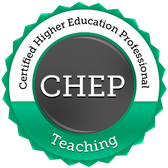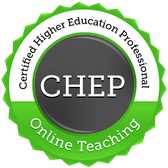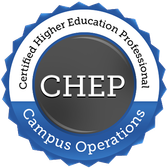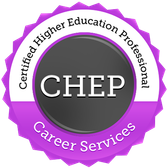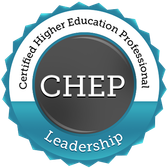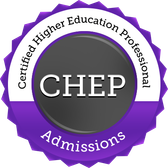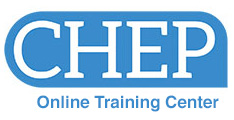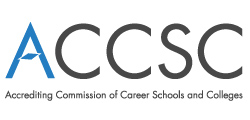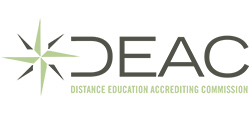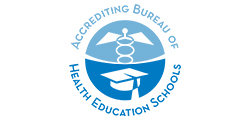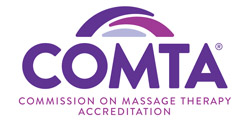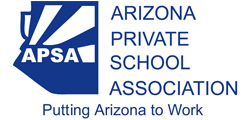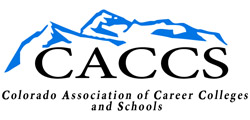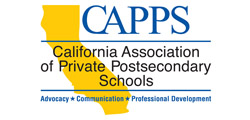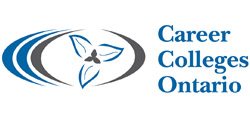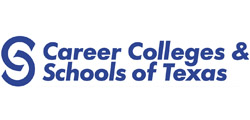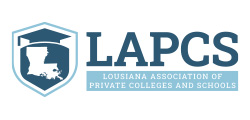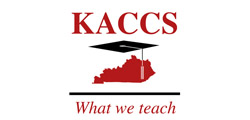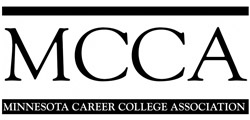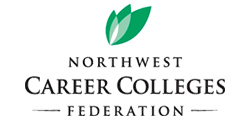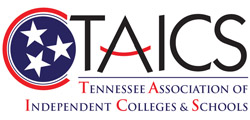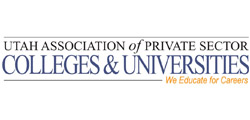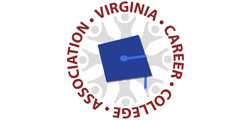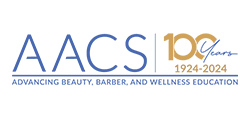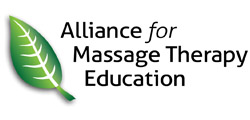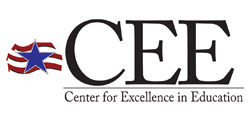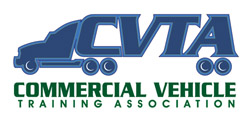Badge Evidence | Completed Courses (4 Hours Each)
ACCSC101Fulfilling the Standards of Accreditation: Administration
This course "pulls back the curtain" for schools to help them better understand the principles and purposes of the ACCSC Standards of Accreditation. ACCSC101, along with the accompanying course ACCSC102, lays out the standards in line with the way schools are typically structured to better help you comprehend the important relationship between each standard and each aspect of running a compliant, accredited school. This course addresses the standards on the administrative side of your school, such as standards that relate to operations, admissions, and financial aid.
AD105Communication Essentials
Effective communication skills are essential in every aspect of life - especially in our work with students. This course provides a foundational understanding of all forms of communication and offers new techniques to improve admissions performance. In addition, a communication hierarchy provides participants with an advanced understanding of rapport building and connecting with today's students.
AD108RBest Practices in an Ethical Enrollment Process
Ethical behavior in recruitment is essential to student and institutional success and is a crucial component of a compliant institution. This course provides a framework to evaluate your current admissions interview process and offers new tools that allow for meaningful connections with today's students. An ethical enrollment process will help your students make their own best decisions and will increase the effectiveness of your admissions personnel.
AD113Managing Your Attitude and Energy to Maximize Your Effectiveness
The most successful admissions professionals are those who maintain a positive attitude and energy, but maintaining that positivity each and every day can be tough. This course focuses on the importance of understanding and building your personal attitude and energy to maximize your effectiveness. You will have the opportunity to assess your attitude and energy and manage these elements to maximize your performance. In this course, we will examine the fundamentals of attitude and energy and understand why they are so important to your success. In addition, we will utilize assessments to look at your current attitude and energy levels. Finally, we will review tips and best practices to enhance your energy and attitude output. Once you have completed the course and activities, you will be prepared and ready to best serve your students and school by maximizing your personal attitude and energy.
AD114Adapting Your Communication for Successful Connections
Today's admissions professionals need expanded methods to adapt to where the prospective student is in the decision-making process. Whether you work with students online, face-to-face, or a little of both, adding variety will help you successfully connect with your students. In this course, you will discover ways to improve your connections with prospective students, best practices for inbound and outbound communication, how to address challenges in the moment, and methods for effective follow-up that improve your effectiveness as an admissions professional.
AD115Effective Questioning and Listening
Questioning and listening are essential elements of communication - especially when working with students. This course provides an in-depth understanding of the purpose of skillful listening, and how this is necessary to be the most effective in your position. In addition, this course provides an in-depth understanding of the purpose and types of meaningful questions. You'll be introduced to the fundamentals of both questioning and listening, as well as new tools and techniques to help you refine your questioning and listening skills.
AD200Relationship Building in the Admissions Process
The purpose of this course is to improve the relationship and dynamics between the admissions representative and prospective students to ensure an educational goal is soundly met. The relationship cycle, the importance of relationships, and the process of finalizing the enrollment are discussed.
The goal of this course is to help develop a better understanding of the topic and produce tangible resources to help implement plans, strategies, and ideas at your school. In addition to lecture videos, links to possible resources, and assessments, you will be able to utilize the Journal and Learning Activities.
CM102Raising the Bar - Compliant Communications with Students
This course is designed for employees of all roles and levels at institutions that participate in federal financial aid programs. The course provides an awareness of prohibited acts which could adversely impact operations, and covers the requirements which must be adhered to in order to maintain good standing with state* and federal regulations as outlined in the Program Integrity rules. Emphasis is on areas of misrepresentation related to advertising and recruitment activities, interactions with prospective students and appropriate communication of disclosures and other publications.
*This course currently covers the regulations for the following states: AZ, CA, CO, FL, GA, IL, IN, KS, LA, MA, MI, MN, MO, MS, NC, NM, OH, OK, OR, PA, SC, TN, TX, VA, WA. Course participants can select specific state(s) at the beginning of the course to customize the training content to their state.
CM104Compliant Interactions: Acting with Integrity
This compliance training course is designed for admissions, financial aid and career services employees of accredited institutions participating in federal financial aid programs. The course provides a clear and practical understanding of the federal regulations that govern the conduct of your institution and correspondingly underlay the performance of your job. The purpose of the course is not to train you to become a regulatory expert, but to provide the information you need to do or say the right thing when interacting with both prospective and enrolled students, as well as the consequences of doing or saying the wrong thing whether by mistake or with intent. More importantly, the course emphasizes that 'Doing the Right Thing' ensures that we provide an environment of trust where prospective students receive the information they need to make informed decisions about their education.
CM140Title IX and VAWA Training: Building Safer Campuses
This course is designed to assist personnel at all levels of an educational institution in the understanding of the provisions of Title IX of the Education Amendments of 1972 ("Title IX") as amended on August 1, 2024, and the Clery Act as amended in the Violence Against Women Reauthorization Act of 2013 ("VAWA"). These laws require that all individuals in an educational institution understand and comply with the laws in terms of what is prohibited behavior in relation to sex-based harassment and/or sexual violence, and what steps are to be followed when such prohibited conduct occurs. This course gives the participants information about the laws, as well as procedures to follow, to provide for the rights of all individuals under the laws. It also provides additional resources to assist educational institutions in continuing to build and strengthen their Title IX and VAWA policies, procedures and training throughout the year.
CM151Onsite Visits - Be Ready Anytime
Is your campus ready for a full unannounced visit at any time? Onsite visits are becoming more frequent in recent years and unannounced visits even more so. This training is designed to aid campus leaders to be prepared, using best practices and practical tools, to host an onsite visitor at any time, including visits that are unannounced, by any organization such as state agencies, veterans' organizations, regional, national and programmatic accrediting agencies and the Department of Education.
CS102Empowering Students to Find and Secure the Right Job
In this course, you will be given tools to help your students find the job that's right for them, present themselves impressively on paper, and interview with ease. This course is designed so you can successfully support your students in four phases of their job search: doing a targeted job search, writing a powerful resume and cover letter, presenting professionally, and developing effective interview skills.
CS104Developing a Social Media Strategy for Career Services
Social media is critical tool for career services professionals to interact with and reach their constituent groups yet many career professionals aren't aware of how to develop a purposeful social media strategy. Without a social media strategy, career services departments risk losing relevance with their audience, and they also lose the opportunity of harnessing social media to achieve department goals. This course describes the phases of planning and implementing a social media strategy for your career services department. Each module is based on the fundamental steps of preparing a comprehensive and measurable plan to achieve the goals of the career services department.
CS110Providing Career Services for Students with Disabilities
Students with disabilities represent a unique minority group within higher education. Despite being the largest minority group in the world, all too often their access to and inclusion in programs and services comes as an afterthought. Career services practitioners pride themselves in their ability to serve diverse populations, yet many remain untrained in working with disabled students. This course helps career services practitioners understand federal legislation basics as they relate to disabled students, the unique challenges they face, and characteristics of the population as well as practical resources and career services strategies to help overcome their unique barriers to employment.
**While the course addresses interaction considerations for those with deafness, blindness, learning disabilities, acquired brain disabilities, and physical disabilities, it shouldn't be expected that the course will cover all possible disabilities you may want to specifically learn about. It provides a broad overview.
**While the course addresses interaction considerations for those with deafness, blindness, learning disabilities, acquired brain disabilities, and physical disabilities, it shouldn't be expected that the course will cover all possible disabilities you may want to specifically learn about. It provides a broad overview.
CS111Providing Career Services for LGBTQ Students
There are millions of lesbian, gay, bisexual, transgender, and queer (LGBTQ) job seekers struggling to find careers and even hold down a job, due in part to their sexual orientation and gender identity. What amplifies this issue is the fact that many college career advisors who are supposed to help struggling jobseekers are not trained to address the unique struggles their LGBTQ students face in their career development. This course equips career advisors with the perspective, knowledge, and practical skills necessary to provide quality career services for their LGBTQ students, who greatly need their assistance.
CS114Developing Effective Job and Career Fairs for Students
School hiring events are staples for many institutions, whether ground-based or virtual. They are a large undertaking. However, when done correctly, these events should yield many positive results for students, employers, and the school. This course examines each part of the process involved in a school hiring event: from the planning and ideation phase, to budgeting, staffing, logistics, marketing, student preparation, and a complete process for post-event surveying and follow-up. Beyond practical tips, ideas, and strategies, this course will provide a resource of documents that will help support a robust and dynamic school hiring event.
CS133Career Theory Fundamentals for Career Support Professionals
Dive into the essential theories of career development with this foundational course designed for career support professionals. You will explore major career development theories, categorized into distinct themes, and gain a high-level overview of their strengths and limitations. The course emphasizes a holistic approach, encouraging the integration of multiple theories to effectively address the diverse needs of your learners. By learning techniques specific to each type of career theory, you’ll be equipped to put theory into practice. By the end of the course, you’ll have a deeper understanding of career decision-making, planning, and the dynamics that influence learners’ choices and behaviors. Enroll now to enhance your expertise, elevate your practice, and make a lasting impact on your learners’ career journeys.
EC115Integrating Career Readiness Into Your Courses: Part I
This course will provide an overview of career readiness including information and activities that may be incorporated into your courses. This course, which forms Part I of a two-part series, provides details about four specific career readiness skills: critical thinking/problem solving, verbal/written communications, teamwork/collaboration, and information technology applications. Additional thoughts and resources will also be provided to allow you to consider multiple ways to assist students in developing these skills in your courses.
ED106Enhancing Student Learning
This course provides methodologies and examples to help instructors increase content retention and application by students in need of support. The course starts by covering the skills needed by instructors to be clear communicators. We then discuss ways instructors can become effective in monitoring students and using student groups as learning tools. The course concludes by covering techniques and strategies to instruct diverse learners, including learners with disabilities.
ED110Time and Stress Management for Instructors
Outstanding teachers serve their students by guiding them through their coursework and motivating them to complete program requirements. Instructors at educational institutions are often faced with high stress resulting from heavy teaching loads and limited time. When teachers cannot manage their own time and stress, they cannot fully serve the needs of their students. This course will show instructors how to manage time and stress in their lives and teach some of these skills to their students.
ED112Influencing Student Motivation
This course is intended to offer a practical explanation of how an instructor’s behaviors and choices can influence the motivation of students. It is not intended to be a theoretical or academic treatise about motivation. Module 1 offers useful tips that may help instructors to motivate students. Students’ security and autonomy are described as they influence motivation during instruction, questioning, activities, and evaluations. This is followed by a discussion of how motivation can be improved by enhancing students' sense of autonomy when making assignments, selecting instructional methods, implementing classroom procedures, and developing evaluations. In Module 2, intrinsic and extrinsic motivators are defined and compared. Finally, a variety of "miscellaneous motivators" are offered for instructors to consider.
ED114RQuestioning in the Classroom
In this course we describe the types and characteristics of questions instructors ask when teaching. We define two methods of classifying questions: the first according to the particular skill required to answer them, and the second according to their complexity and the cognitive level used when responding. We discuss appropriate circumstances when various types of questions should be asked, and we refer to studies that support our recommendations. Three instructional strategies are explained that can result in more effective questioning. Four practices are described that instructors use—or should use—during their lessons. Finally, thirteen tips are offered for review and for enhancing and improving an instructor’s questioning strategy and technique.
ED115RSoft Skills for Instructors
This survey course provides an introductory discussion about how good soft skills help instructors to be successful. A distinction is made between hard skills, soft skills, people skills, and workplace behaviors. Selected soft skills are listed for various categories of businesses and industries, including the teaching profession. Two studies are referenced that highlight skills that are frequently cited in the literature. One study was published in 1997, while the other was conducted specifically for this course in 2024. Selected tips are offered for improving one's soft skills. Numerous hyperlinks are included that direct the reader to a variety of online enrichment materials, including a few online instruments that help individuals learn more about their own soft skills.
ED116Critical Thinking Processes and Applications
The majority of careers require the ability to think critically and problem solve at one level or another. Employers seek individuals who can think independently, propose solutions, and solve problems. The content in this course provides the foundation for critical thinking and demonstrates how people with different interests, abilities, and aptitudes approach problem solving. The course covers the different kinds of intelligence and how they impact critical thinking, for a broader understanding of how people process solutions to problems. It concludes with step-by-step instructions for helping students develop and refine their own critical thinking skills.
ED137Cultural Diversity: Including Every Student
Cultural diversity includes a wide scope of differences. While we plan instruction to meet outcomes that are usually supporting a set of pre-determined standards, instructors are faced with a high level of diversity in every class group. It is important for instructors to be aware of diversity and strive to include every student, regardless of difference, in their learning community. This requires intentional planning and accessible instructional design that includes all students and empowers every student to succeed.
ED145Stress Reduction and Management for Educators
This course will provide an overview of a few stress reduction/management techniques for educators. Stress plays a significant role in educators' lives and careers; therefore, ideas for self-help are essential. Details will be provided about ways to reduce stress-related physical/mental issues, build emotional resilience, and practice mindfulness, along with other methods for stress reduction/management. The course provides not only information for educators, but activities for students that can be incorporated to help them reduce/manage their stress as well. With this information, educators may find more work-life balance, health benefits, and other opportunities for stress reduction and management. Application of these techniques can be helpful in enabling educators to better cope with the stress in their lives and careers.
ED149Teaching Game Design in CTE Classrooms
This course provides educators with the tools and strategies to teach game design effectively in career and technical education (CTE) settings. Through modules focused on classroom management, collaborative game development, and student assessment, teachers will learn how to foster an engaging and productive learning environment that balances creativity with discipline. Educators will explore methods for teaching teamwork, assessing diverse student projects, and integrating game design competitions to motivate and challenge students. The course also covers industry career pathways and helps teachers guide students in creating professional portfolios and connecting with game design professionals, preparing them for future success in the field.
ED208Adult Learning Theories
When designing instruction for adult learners, it's important to consider a host of factors. This course describes the characteristics and motivations of adult learners, and the best practices and techniques for teaching them. It discusses the different theories of adult development and adult learning, and their relationships to the classroom experience. In addition, this course examines brain-based teaching strategies, the theory of multiple intelligences, and how the different parts of the brain are affected by new learning.
ED406Motivating Others
Motivation can be the difference between success and failure. In this course, the idea of how motivation impacts people will be discussed. Activities will focus on improving motivation in students, and other people you interact with, as well as yourself. The goal of this course is to help develop a better understanding of the topic, and produce tangible resources to help implement plans, strategies, and ideas at your institution. In addition to lecture videos, resource links, and assessments, you will be able to utilize Learning Activities, which will continue to be useful after successful completion of the course.
ED410Increasing Student Retention by Flipping the Classroom
The Flipped Classroom model has become one of the most commonly implemented educational models seen in classrooms today. Through this course, we will explore the basics of the flipped classroom, how and why it works to increase student retention, and go over steps to start incorporating flipped classroom elements in your courses.
The goal of this course is to help develop a better understanding of the topic and produce tangible resources to help implement plans, strategies, and ideas at your school. In addition to lecture videos, possible resource links, and assessments, you will be able to utilize the Journal and Learning Activities.
EL102Online Teaching Techniques
Your degree of success as an online instructor relies heavily on several factors, among which are your level of preparedness before the date on which the course is launched; your ability to make a smooth transition into the roles and responsibilities associated with teaching in an online environment; and the effectiveness and efficiency with which you manage learners, instructional transactions embedded in the course as well as the learning environment. In this course, you will learn how to project your authority and presence into the e-learning environment, build a relationship with each learner, promote and nurture learner participation, provide informative and constructive feedback in a timely manner, minimize attrition, manage communications, manage unacceptable behavior and resolve disagreements.
EL103RTeaching Online: A Student-Centered Approach
This course will provide you with the knowledge and skills to successfully author, teach, assess, and revise online courses. You will learn to develop a course framework with consistent modules. Building an online community and constructing a dynamic syllabus are important in helping you communicate with students. You will also learn how to develop an assessment plan that includes peer and self-assessment. No online course is complete without a comprehensive revision cycle. This course will walk you through the process of "closing the loop" to create a complete revision and improvement plan for your online course. We will provide you with ideas for student-centered learning that includes activities and intellectual interactions using a variety of technological tools.
EL105ROnline Language: Communicating with Students
This course provides information to help you effectively communicate with students and encourage communication among students in an online environment. You will learn the importance of facilitating instructor-to-student (I2S), student-to-instructor (S2I), and student-to-student (S2S) communication. Digital technology tools play a vital role in the modern communication process, and several are discussed in this course. In addition, discussion is provided to help you further understand how to manage and measure communication in an online course and help students communicate effectively.
EL106Evaluating Student Learning in Online Courses
This course will provide you with the knowledge to effectively evaluate student learning in an online environment. Technology tools play a vital role in the evaluation process and several are discussed in this module. Discussion will also be provided to help you further understand how to complete formative and summative assessments, as well as the advantages and disadvantages of objective and subjective assessments. Value-added assessments are also discussed in light of how they can be completed and provide feedback for course revision.
EL108Preparing Students to Become Good Online Learners
This course will provide you with strategies and techniques to help prepare students for the online environment. To do so, you must also assess your strengths and weaknesses as an online instructor. As you help students assess their readiness for online learning, you are also preparing them for the expectations and realities of the online environment. By identifying students' strengths and weaknesses, you can provide guidance to help them achieve the learning outcomes. This course not only notes the necessary technical skills, it also discusses non-technical skills as well as techniques for successful learning and helping students develop their online persona.
EL109Using Rubrics to Enhance Online Learning
This course will inform you about the purpose of rubrics and will provide you with the techniques to develop rubrics as an assessment tool for student performance, processes and products. This course will explore types of rubrics, the role rubrics play in assessment, as well as the use of rubrics in evaluating elements of your online course to ensure your course is truly student-centered.
EL112Workload Management Strategies for Teaching Online
This course will provide you with strategies and techniques to help you reduce your workload in the online environment. The course begins with an overview of good principles for education and questions to consider prior to developing Workload Management Strategies (WLMS). This course also provides WLMS for teaching online, communicating and collaborating, and revising your online course.
EL115RGaming and Simulation in Online Learning
This course will provide you with strategies and techniques to immerse students in an interactive environment that will incorporate gaming and simulations to introduce, engage, and reinforce online learning. This course will begin with definitions of gaming and simulations as a tool for online learning and will provide guidance to evaluate, implement, and assess the effectiveness of games.
EL116The Asynchronous, Self-Directed Learning Model
This course will provide you with a basic overview of designing and implementing asynchronous, self-directed online courses effectively. It will review the differences between synchronous and asynchronous online courses. Traditional components of face-to-face courses such as readings, written assignments, and discussions work well in the asynchronous online class environment, but what happens to laboratory assignments and applications? Can they fit into the online course model? Courses which need a lab component, especially the STEM (Science, Technology, Engineering, and Math) courses, may seem impossible to complete in the online environment. Practical examples of effective online lab situations will be provided in this module. This will assist in promoting student engagement and increasing the student's learning potential.
EL120Fully Online Doesn't Mean Inactive
Active and passive learning are critical concepts to ponder for online learning. Each one has positive benefits when explored and applied in the context of learning and the designing of instruction. There is, however, a difference between passive and inactive. One is an intentional part of learning while the other is the absence of something. We will explore these and other concepts in this course. In addition, strategies will be shared that will enable educators to make their online instruction more engaging and beneficial for learners.
EL121Teaching Skills and Trades Online
Although online learning is becoming more normalized in our educational institutions, there are still many questions about its effectiveness for certain areas of study and training. There remains an idea that online learning is mostly passive and therefore unsuitable for anything active and specifically the development of skills and trades. This course will explore the changing realities of online learning and how effective it can be in the training of skills and trades. Strategies will be shared to facilitate the online teaching of applied skills in simulated and real-world settings.
EL142Effective Online Assessments
Assessments are a vital part of the learning process. They allow students and teachers to see how well they are doing and what needs to be improved upon. When offering online assessments, it is sometimes difficult to develop effective methods due to the new digital learning landscape, experience level with online teaching, or with tweaking on-ground assessments to create an effective online form.
In this course, students will identify the impacts and opportunities that online assessments have in the digital learning process, discover the challenges that can present themselves and the strategies to overcome them, and evaluate guidelines for crafting effective assessment opportunities in an online course.
FA110Developing an Efficient Financial Aid Office
This course provides a blueprint for running an effective financial aid office in an educational institution. You will learn to optimize the performance of your financial aid office with a minimum of waste, expense, and unnecessary effort. The course covers the cornerstones of an efficient financial aid office: timeliness, accuracy and customer service. You will also be advised of pitfalls to avoid in the realm of Title IV compliance. You will learn the key points to building an effective business office processing procedure. Reports and notifications required by the Department of Education are also explained. In addition, you will be given pointers on preparation for the annual Student Financial Aid (SFA) compliance audit and alerted to the most common triggers for Department of Education Program Reviews.
FA210Application Process: Verification, C-Codes and PJ
This course is designed for the financial aid representative who is familiar with the financial aid process, and the campus manager seeking to learn more. The course provides a detailed review of the FAFSA to ISIR/SAR application process, concentrating especially on the technical aspects of the process beyond timeliness and accuracy. The importance of documenting verification and clearing comment codes will be explored, in addition to your role in using professional judgment.
FA231Regulatory Compliance - Outside the Financial Aid Office
This course will help participants to interpret the many rules and regulations that are required by educational institutions offering Title IV funding. It will aid in preparing management and faculty in recognizing that compliance is the responsibility of the entire institution and is not just the job of the Financial Aid Office. Course content will also aid the individual in building a "culture of compliance" which will encourage teamwork and secure the cooperation of others on campus.
LS101RDo You Manage Or Lead?
This course explores the critical differences between management and leadership. Participants will be introduced to definitions and myths about each area as well as how management and leadership must coexist for an organization to operate effectively. Participants will explore their own management/leadership tendencies through exercises to see leadership and management in action.
LS102How Do You Lead?
Not everyone is suited for, or desires, a leadership position. One of the first steps to being an effective leader is to understand the desire to lead in the first place. Participants will explore their motivation to lead and develop a deeper understanding of their leader style(s).
LS103RYour Leadership Impact
To improve your impact and effectiveness as a leader, you must not only understand the role of a leader, but you must also take into consideration the followers and the situation. This course defines leadership impact and explores the interactional framework for leadership.
LS104RYour Leadership Legacy
The higher education industry provides a wealth of opportunities and challenges for those seeking leadership positions. In this course, participants will gain a deeper understanding of the higher education sector and themselves. The importance of higher education institutions will be explored along with developing a personal leadership legacy.
LS105RYour Leadership Toolkit
Get ready to add a number of skills to your toolkit as you develop as a leader! This course focuses on increased self-awareness in communication styles and learning; developing deeper understanding through empathic listening; and motivating through innovation.
LS106This Way to Leadership
This course provides you with a framework to put your self-discovery and learning into a workable plan to further develop your leadership skills. A step-by-step process is offered to help you create a meaningful Personal Leadership Development Plan (PLDP) complete with the development of SMART Goals and advice from some of today's leaders in the higher education sector.
ML116Writing Skills
Skillful writing helps you accomplish your business objectives and extends your influence as a manager. In this course, you will learn to create clearer, more effective written communications. The course includes specific guidelines for preparing memos, letters, emails, and other common business documents.
OH110Ohio Faculty and Staff Compliance Course
This compliance course reflects the compliance standards that Ohio educators need to know and understand. The goal of this course is to help develop a better understanding of the topic, and produce tangible resources to help implement plans, strategies, and ideas at your school. This course will cover governing bodies, the enrollment process, standards, compliance concepts and more. Through video lectures, resource links, and assessments, learners will gain knowledge about and understand compliance standards.
This course is approved by the Ohio State Board of Career Colleges and Schools to satisfy compliance and ethics continuing education requirements. Participants who successfully complete the course will receive a certificate of completion with 4 hours of continuing education credits.
OH115Ohio Admissions Agent - New Permit Course
This course will satisfy the Agent Training Requirements for new Agents in Ohio. It is required by the Ohio State Board of Career Colleges and Schools for all Admissions Agents applying for a new permit.
This course will review the provisions of Ohio’s laws (Ohio Revised Code Chapter 3332) and administrative regulations (Ohio Administrative Code Chapter 3332) that govern student solicitation, recruiting, and the oversight of agents (admissions representatives).
OH120Ohio Admissions Agent - Renewal Course
This course is part of the Agent Training Requirements for Agents applying for a renewal license in Ohio. It is required by the Ohio State Board of Career Colleges and Schools for all Admissions Agents applying for a renewal license. This course is designed to cover the regulations in Ohio Administrative Code 3332.1.17.2, focusing on ethics and professionalism in the admissions process.
OP105Developing a Five-year Plan for Your Educational Institution
What will your institution look like in five years? Growth takes change and the commitment of the stakeholders in your organization. A five-year plan is essential for any owner or director of an educational institution, no matter how long they have been in the business. It includes various elements such as your enrollment goals for all programs, plans for new programs, new profit center potential, fees and all financial aid opportunities, enhancement of student services, faculty and staff planning, marketing and development strategies, and planning for physical space to support your expansion goals. Also, development plans are often needed to satisfy licensing and accreditation requirements.
This course covers the essential components and techniques involved in developing a comprehensive five-year plan. We will show you an effective step-by-step planning process that involves the participation of representatives from your institution including staff, instructors, students, graduates, and the employers who hire your graduates. The process encourages participants to share their knowledge and ideas, and everyone who participates in the process ultimately becomes a stakeholder in making the plan work. The course includes planning worksheets that you can download and use to help you develop your institution’s five-year plan.
OP106Developing New Programs: Research and Selection
Educational institutions need to be aware of emerging employment opportunities in new and expanding fields if they are going to continue to attract students. Most licensing and accrediting agencies ask an institution for some form of feasibility study when submitting new program-add applications. The research involved in this step often requires proof of need for the program, number of anticipated job openings, and input from employers. This course outlines ways to collect data to make an effective decision and show regulatory agencies proof of employment opportunities. Step-by-step directions are included to assist institution staff in conducting effective research and preparation of curriculum to meet employer specifications.
OP115RHiring the Right Faculty for Your Institution
This course shows you how to hire high-quality instructors and orient them to your institution. The skills also apply to hiring staff. It's easy to hire someone to do a job. But it can be difficult to hire the right person. You want instructors who are top notch. They represent your institution and interact with the most people at your campus and particularly your students. This course starts with how to determine exactly what type of people you need as your instructors. Then it shows you how to recruit and hire them. Once hired, you'll learn how to introduce them to the working environment at your institution. By the time you finish this course, you'll be recruiting, hiring, and orienting quality instructors. You'll see results in improved enrollments, student achievement, retention, and completion.
RT101Improving Retention through Timely Intervention
How many times have we said “if we’d only known” as a student walks out the door? No one starts classes planning to fail, but unfortunately problems do arise that present barriers to success. Students are good at identifying these problems blocking their path to success, but they frequently don’t have adequate problem solving and communication skills needed to overcome these problems. This course looks at the effect of stress on attrition, the use of tools to identify and help students at risk, and how to develop an institutional culture that shares responsibility for student success across the entire organization.
